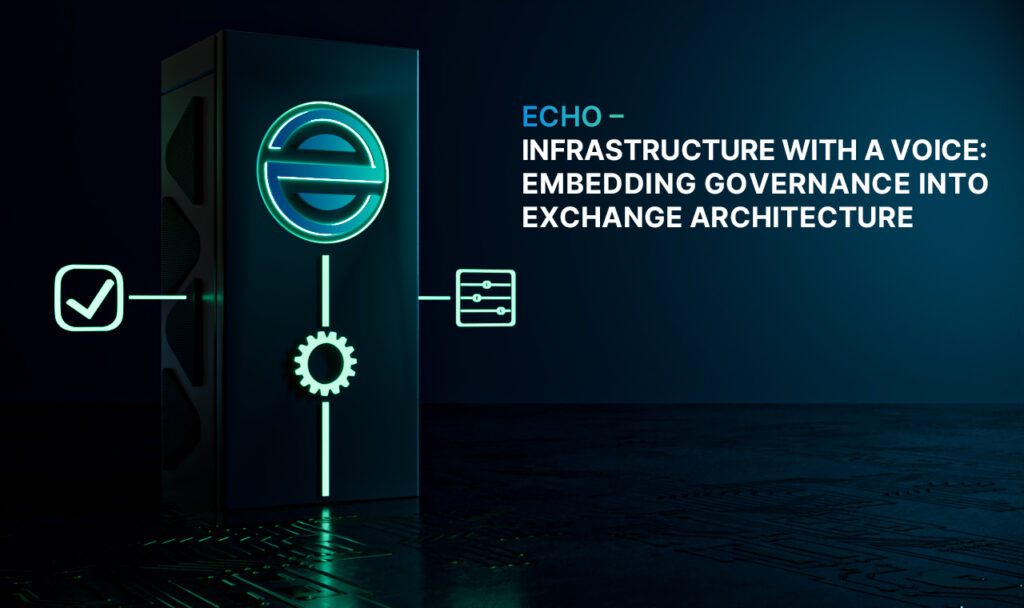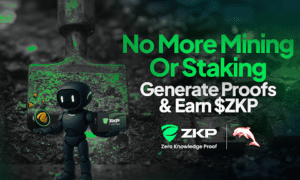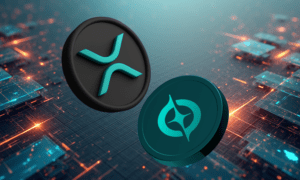
The May launch of Echo Exchange represents the debut of a trading ecosystem that doesn’t just offer speed and incentives. The team introduces a new framework for how exchanges can be governed.
At a time when many platforms promote “community” but retain centralized control, Echo takes a structurally different approach. It embeds decision-making into its tokenomics and enforces long-term alignment through a legally bound foundation.
With its initial product offerings live, including EchoX and the ECHO Token, Echo introduces a governance model. This framework will soon give platform users tangible control over what comes next.
Echo Launch Overview
Echo is now live with its first set of features. EchoX, a centralized exchange geared toward simplicity and ease of use, is already operational. Alongside it, the ECHO Token has entered circulation, offering holders the ability to earn USDC-based yield drawn from exchange revenue.
Echo Elite is the platform’s custody module built on a Protected Cell Company (PCC) structure. The product is also available in soft-launch form, offering secure digital asset storage options.
While Echo’s roadmap stretches far beyond these initial offerings, the underlying principle is already visible: Echo is designed to ensure participation has real, long-term consequences.
A Governance System with Enforceable Structure
Governance on Echo is not just an interface or voting widget. It is directly tied to legal infrastructure. The ECHO Token gives holders not only access to yield but also the ability to help the platform grow. Token holders will be able to steer platform development, approve partnerships, influence fund allocation, and more.
At the center of this system is the Community Foundation. Legally incorporated and constrained, the Foundation holds 30% of the total token supply. However, these tokens are not transferable. They cannot be sold or withdrawn. Instead, the Foundation receives yield alongside other token holders. This feature lets it use that income to fund initiatives that are first proposed and then approved by the community.
This legal structure ensures that governance is more than a promise – it’s an obligation written into the architecture.
The Foundation Model: Locked Capital, Continuous Participation
Unlike treasuries seen in many other Web3 platforms, Echo’s Community Foundation cannot inject liquidity into the market or exit positions. The capital it holds is fixed and functionally locked. It can only grow or decline based on the success of the platform and the decisions of token holders.
Its purpose is focused: support the ecosystem’s evolution through grants, research, education, and long-term incentives. How those funds are deployed and to whom will be decided through community proposals. The process is not yet live but will be rolled out in 2025 alongside Echo Pro and the governance module.
This model makes Echo’s largest capital reserve permanently accountable to its user base. If Echo grows, so does the Foundation’s ability to fund new development. If engagement drops, its budget contracts accordingly.
The Token as a Tool
The ECHO Token is at the center of this participatory framework. Designed to deliver both utility and influence, the token allows users to earn daily yield in USDC. This yield is sourced from 50% of EchoX and Echo Pro’s trading fees. Such a specific design creates a direct connection between platform usage and individual rewards.
Another 10% of daily revenue is used to buy back and permanently remove ECHO tokens from circulation. This deflationary mechanism continues until the total supply is reduced by half – from one billion to five hundred million.
Importantly, token holders retain full liquidity. There are no lockups, and yield is not contingent on long staking periods. This lowers the entry barrier for participation and encourages both traders and long-term holders to stay active in the ecosystem.
Governance with Transparency
A major challenge of decentralized governance has long been low engagement and undefined effects. Echo seeks to address that with a focus on transparency, enforceability, and ease of use. Voting rights will be allocated based upon wallet balances, with no third-party interfaces or staking tools necessary.
Proposals will be natively integrated into the Echo interface when the governance module becomes available. Here, they will be voted on using the same credentials that users leverage for trading and yield management.
All such decisions will be made on-chain and expressed in the operational usage of Foundation funds. Echo has stressed that governance isn’t something that they see as optional or beta. It’s something that is integral to the platform’s operational model.
This framework provides a feedback loop: the more the users hold and engage, the greater their influence on what will be developed. And because voting power is aligned with real, yield-generating stake, speculative interests are discouraged in favor of long-term alignment.
Product Ecosystem
While governance is central to Echo’s identity, it functions alongside a suite of trading tools designed to scale over time. EchoX is already live, offering stablecoin pair trading, minimal fees, and a straightforward user experience.
Echo Pro, scheduled for launch in the next development phase, will offer advanced features. Among these, we can mention leverage, complex order types, and API connectivity for institutions and professional traders.
It uses a single unified backend architecture across the entire platform. Scala drives the matching engine, with business logic and interaction layers handled by Go and React. The frontend uses Next.js for fast response times on any device, as well as on any operating system.
Custody falls under Echo Elite, a PCC platform built for the segregation of user assets under enforceable legal protection. The option, first made available for higher-volume users, will see further intertwining with other tools on the platform.
Looking Ahead
Governance tools will go live in the next phase of the roadmap. Next, the Echo Pro release, trading bots launch, and the start of community-led proposal voting will also become available. These proposals are expected to shape everything from feature priorities and interface changes to launchpad approvals and marketing campaigns.
Future phases, planned through 2026 and 2027, include tokenized real-world asset trading, derivatives, social features, and integrated neobank rails. With each new module, governance responsibilities will expand. This steady growth will give users a broader scope over how capital is deployed and how services are maintained.
Yield Compounding: Two Scenarios Worth Considering
Before wrapping up, to assess the potential benefits of Echo’s real yield system, we ran some analyses on our own. Specifically, we examined how two different investor profiles might experience growth under various conditions.
These are not projections issued by Echo, but independent illustrations using standard compounding logic. We’ll also explain the different assumptions around tax- or fee-based models.
Scenario 1: Conservative Outlook with Tax Drag
In this case, we assumed a starting portfolio of $25,000 and an annual return of 10%. Under a traditional model taxed annually at 12%, the portfolio reaches just over $313,000 after 30 years. If taxed more aggressively – as short-term gains at 15% – that drops slightly to under $289,000.
Compare that to Echo’s model, which bears closer resemblance to a flat-fee, tax-neutral compounding system. In a version equivalent to paying $15,000 at year five, the value crosses $1.16 million after 30 years – almost four times the value of the taxed scenarios. It continues to grow well into seven figures by year 50, highlighting the compounding edge of reinvested real yield.
Scenario 2: Optimistic Performance with Enhanced Returns
Here we adjusted the annual return to 15%, reflecting a more aggressive portfolio strategy. The same $25,000 starting point grows to $811,000 under the long-term tax model (18%). The number is just under $749,000 with short-term treatment (20%).
But again, using a structure similar to Echo’s – real yield compounding daily without ongoing tax exposure – the picture changes. Modeled like a one-time fee setup, the portfolio passes $1 million by year 29 and crosses $4.6 million by year 40. At 50 years, the figure remains close to $19 million. These numbers show the sheer compounding force of uninterrupted earnings over the long haul.
Although no outcome is assured, these examples demonstrate that Echo’s methodology can be an appealing one.
Wrapping Up: Governance as Infrastructure
Most sites first launch and go on to plan governance later. Echo, on the other hand, has made governance architecture a priority alongside product rollout.
Legal framework, token economics, and structural restrictions imposed on its Community Foundation are essential to understand more about Echo. The features indicate a long-term plan where control isn’t merely doled out but constrained, decentralized, and enforceable.
By integrating governance into its architecture, Echo becomes something more than a trading platform. This is an operating system for aligned capital flow where decision-making authority is tied to performance, participation, and platform health.
Do you want to find out more about Echo? You can check every point in our review on the team’s official website. If you’re into social media, you can also follow Echo on the platforms below.
X (Twitter) | Telegram | Discord




























